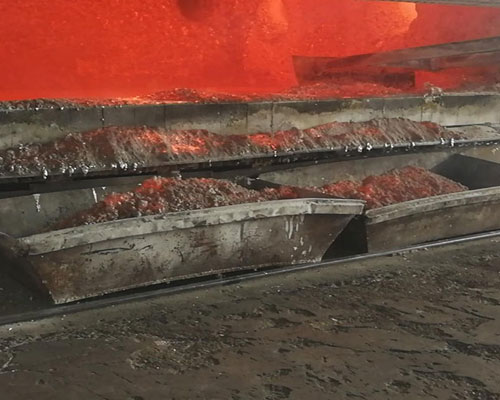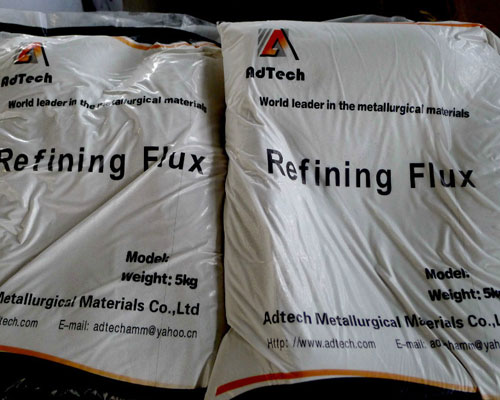The flux for slag removal in the aluminum alloy melt mainly through three methods of adsorption, dissolution, and compounding. The dissolution is mainly achieved by adding a chemical that can dissolve with the slag inclusion in the flux, and realizes dissolution according to its physical and chemical similar properties , And then removed together with the flux, such as Na3AlF6 can dissolve Al2O3. And the chemical reaction is through the chemical reaction between the fluxes and the slag to generate other easily removable compounds to achieve the purpose of removal, such as Na2SiF6, and the remaining Al2O3 reacted to produce Na3AlF6 and AlF3 All can be refined through other mechanisms.
At present, high-performance alloys are developing in the direction of large specifications, and the size requirements of casting billets are gradually increasing. The residual gas, impurities, slag and alkali/alkaline earth metals in the aluminum alloy melt are harmful to the casting billet processing deformation and service process.

The inclusions in the aluminum melt include solid inclusions such as carbides, nitrides, oxides, hydrides, borides, and metal inclusions such as iron, silicon, zinc, and manganese. Among them, Al2O3 is the main component, accounting for 95% of the inclusions. The size of non-metallic inclusions in the aluminum melt is between several to tens of microns, which is very harmful. The non-metallic oxide inclusions and the matrix of aluminum alloy materials have different performance parameters such as elastic modulus, hardness, and expansion coefficient. Under the action of external force, stress concentration is likely to occur at the sharp corners of the oxidized inclusion phase, which will cut the matrix structure, make the product leak or be prone to rot, and significantly reduce the mechanical properties and stress corrosion resistance. The presence of slag will also reduce the fluidity of the alloy and the ability to fill the mold, and increase the tendency of casting defects. Increase the inhalation tendency of the aluminum melt, and block the diffusion and precipitation of gas, and promote the formation of secondary porosity and voids during the heat treatment process.
AdTech produces flux for slag removal. AdTech refining agent adopts unique technology to enhance the traditional degassing and slagging effect in molten metal.

